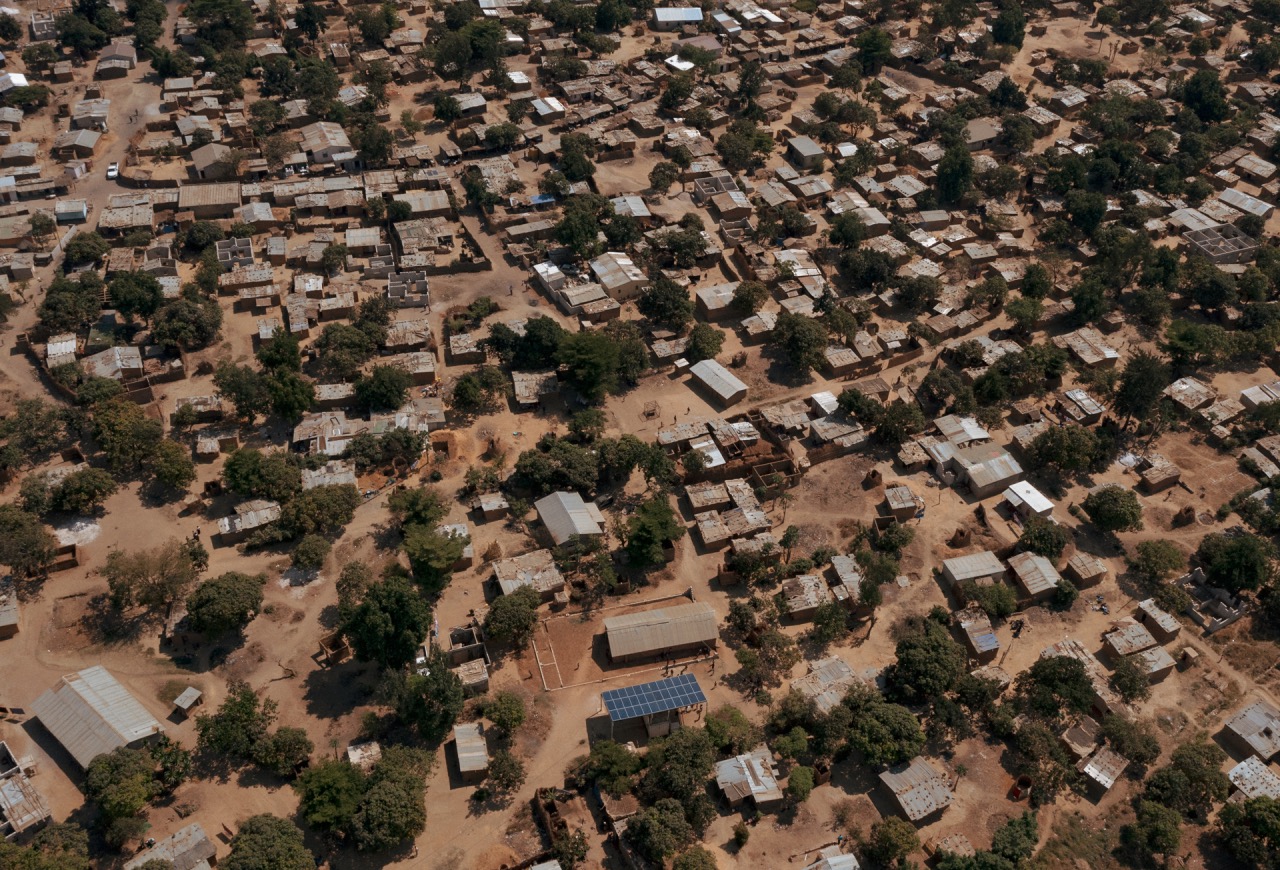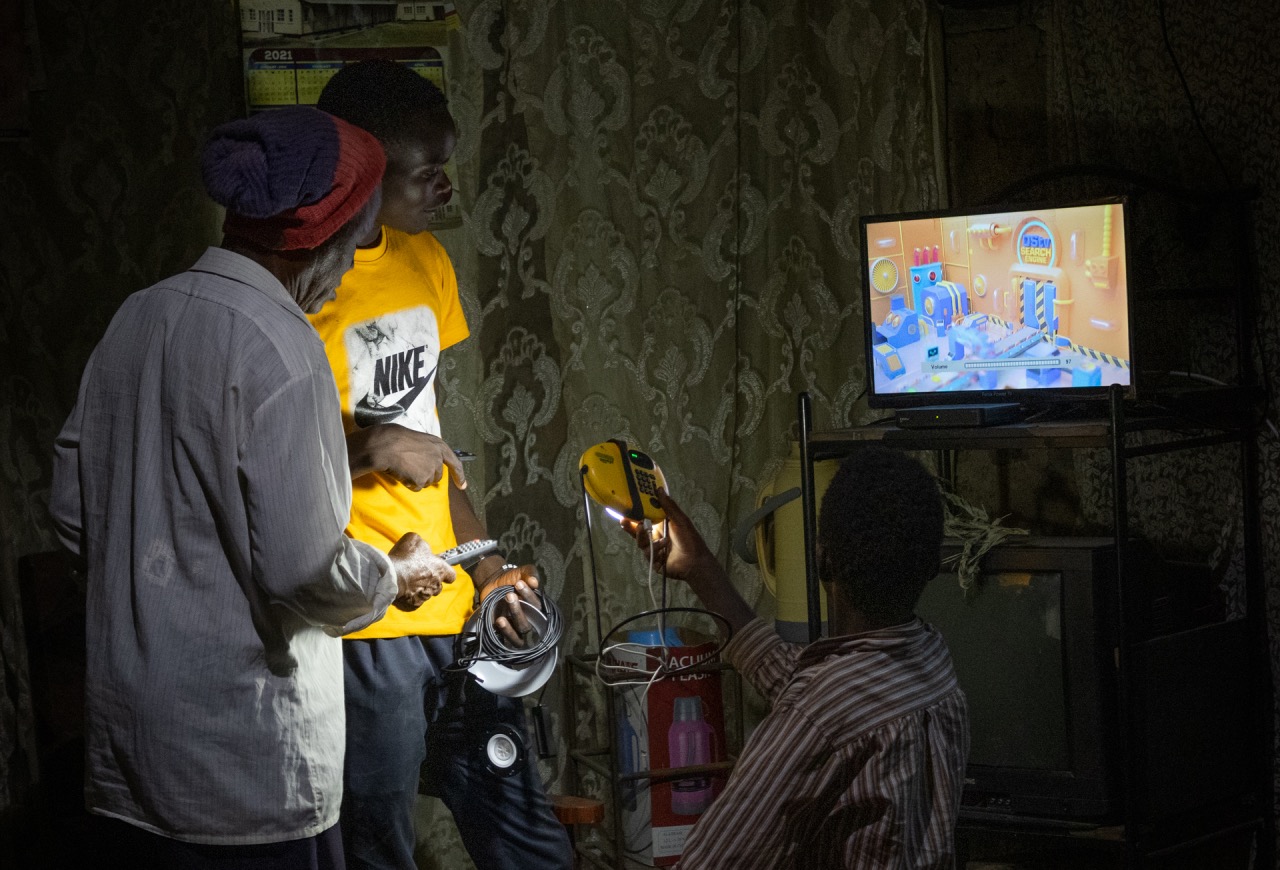The Beyond the Grid Fund for Africa is expanding its geographical reach in its aim to bring clean, affordable, off-grid energy access to millions of households and support the growth of commercially sustainable businesses across the continent

In brief
- Capitalised at €108m, the Beyond the Grid Fund for Africa (BGFA) aims to bring electricity to millions, and accelerate the emergence of new business models for affordable energy
- Established in 2019, the fund has developed into a multi-donor programme with funding from Sweden, Denmark and Germany
- The Democratic Republic of Congo is the latest country to join the BGFA network. The expansion of the programme is mainly driven by donor funding and host country needs
Music blares from a loudspeaker outside a small shack in Ngwerere, a settlement on the outskirts of Zambia’s capital Lusaka.
Bar owner Anita Namunika, a mother-of-three who also runs two shops in the area, hauls two cold drinks from a fridge and hands them to the punters.
“Business is booming,” she says with a wide smile. “Having electricity has made huge difference. It’s safer to walk around in the evening, I can offer refrigerated drinks and keep things for longer.”
A few years ago, the village of Ngwerere plunged into darkness at sunset. But thanks to a solar powered microgrid that supplies 150 households and small businesses with renewable electricity, the area has a new lease of life.
Streetlights brighten the narrow alleyways, and there are barbershops, bars and restaurants – and enough sockets to power mobile phones, laptops and television sets.
“Electricity is more than just lights. The social impact of having electricity is huge,” says Cornay Keefer who works as deployment manager at Standard Microgrid, one of several energy companies that have received funding from Beyond the Grid Fund for Africa (BGFA) to help electrify rural and semi-urban areas of Zambia.
Multi-donor programme
Only 5%t of the rural population in Zambia is connected to the main grid, paving the way for private energy providers like Standard Microgrid. To kick-start the development, Sweden launched a procurement-based initiative five years ago with the aim to provide one million households with electricity.
The initial €12m publicly funded programme was matched by four times that in private equity, growing to a total investment of €48m. Following the success of the Zambian experience, the initiative grew into a model investment programme involving public-private partnerships.
BGFA is managed by Nefco, the Nordic Green Bank, and since its launch in 2019, it has developed into a multi-donor programme, with additional funds from Germany and Denmark.
Currently, the fund is capitalised at €108m, with ten funding lots open in six countries. Nefco’s vice president Ash Sharma says the BGFA was designed to stimulate and accelerate the emergence of new business models for affordable energy.
“The funding lots are at varying stages from signing our first projects in Liberia, Burkina Faso and Zambia, to undertaking a market scoping in DR Congo. We have received strong interest from off-grid companies who are active locally and those with operational experience from other African countries, and in some cases other developing country markets such as in south Asia,” he says.
Scaling up commercially sustainable businesses that target the energy poor is at the heart of the BGFA approach, explains Sharma.
Early movers into frontier markets
“A scheme for early movers in risky frontier markets has proven to be crucial in accelerating market expansion, reaching poor customers in underserved geographies. This mechanism has shown that it can incentivise rollout and scaling up in areas that would not represent viable markets for companies in the absence of public finance,” he says.

Brian Somers, CEO of solar energy company Standard Microgrid, agrees that public funding subsidies are key for attracting foreign investors: “It’s difficult for investors to understand the risks they must take to get a return on their investment. There are major challenges when it comes to security, political stability, and industry regulations. How do you put a price on that risk?”
The company is currently busy scaling a 150-microgrid portfolio in landlocked Zambia. Last year, French energy giant EDF closed an equity investment in Standard Microgrid that will help bring power to 130,000 Zambians in the coming years.
“We are starting to put applications to new markets, but our primary goal is to make sure Zambia is working and being deployed at scale. If we can’t operate these grids, then there’s no need to even look at new markets,” says Somers.
Geographical expansion
The Democratic Republic of Congo is the latest country to join the BGFA network. The expansion of the programme is mainly driven by donor funding and host country needs.
The stage of market maturity is an important factor also, explains Anders Arvidson, who is senior adviser at the Swedish International Development Cooperation Agency’s (SIDA) Power Africa team.
“Kenya, for example, already has a well-developed off-grid sector, while Tanzania and Rwanda have similar initiatives in place for electrifying rural and semi-urban areas. In DR Congo, there is strong political support for this type of approach, coupled with a modern and expansive policy framework for green investments,” he says.
So far, Sweden has invested just over €80m in BGFA, while Germany and Denmark invest between €7 and €11 million in Zambia and Uganda, respectively.
The US contributes with technical aid worth $6m through USAID. Additionally, Norway has showed interest in joining the team of donors with financing of around €40m, Arvidson points.
Big impact for little cost
Arvidson notes that the main advantage of the BGFA model is the cost-efficiency for providing household electricity in places that are not `served by the main grid. The initial cost per connection in Zambia was less than €60. “That’s a lot of impact for little cost,” he says.
Initially, every €1 given as aid for kick-starting the renewably energy market in Zambia, attracted €4 in private investments, and 70% of the total public revenue has been allocated for physical power installations, according to numbers released by SIDA.
Arvidson says doubling the public money is a realistic goal as the BGFA programme expands:
“There are fewer investors and loan providers, and investors are less willing to take risks. The Covid-19 pandemic is one of the reasons. But we look forward to the model being applied in other countries, particularly in countries where Sweden doesn’t play an active role in the development of the energy sector.”






